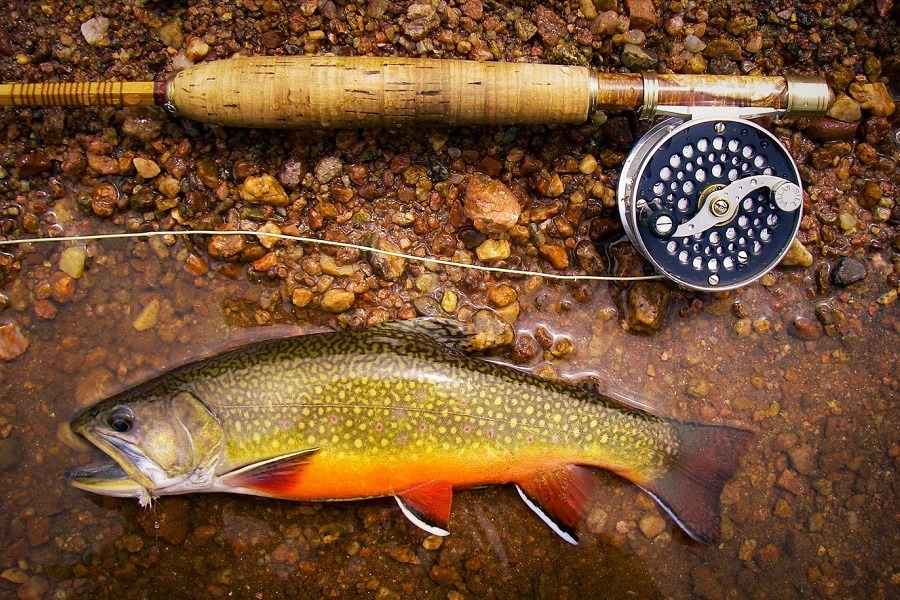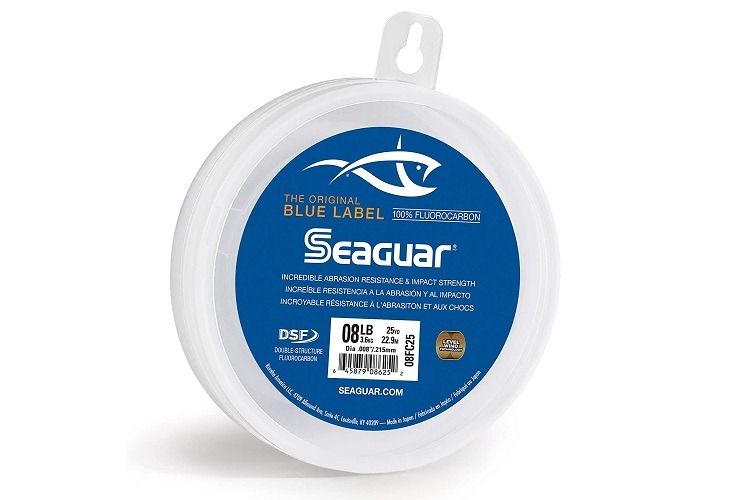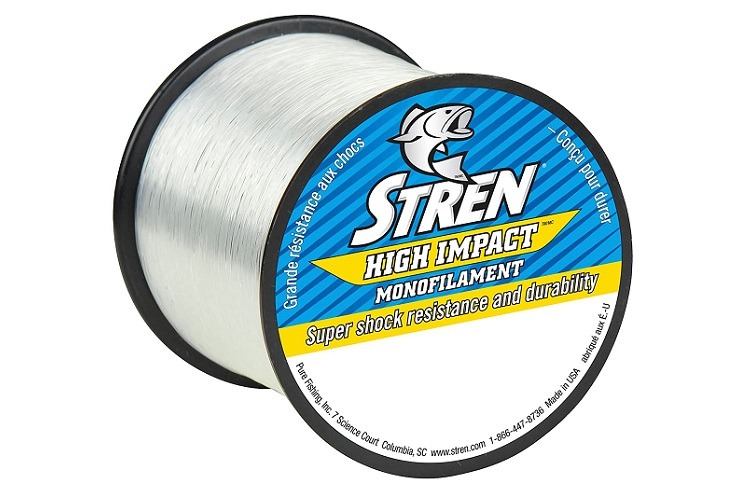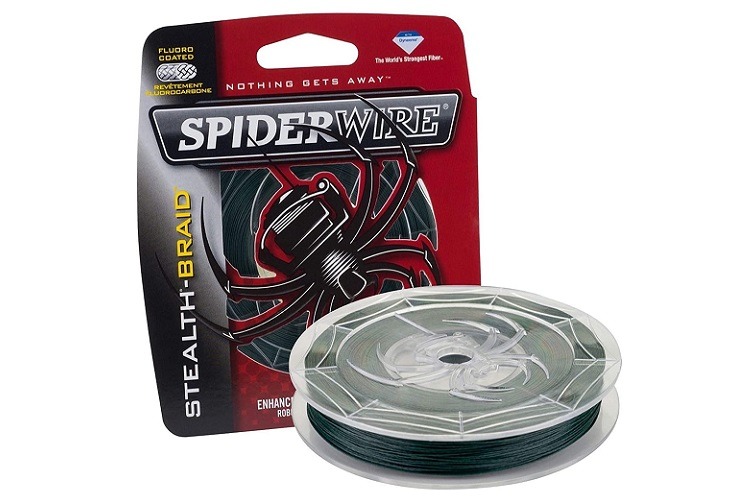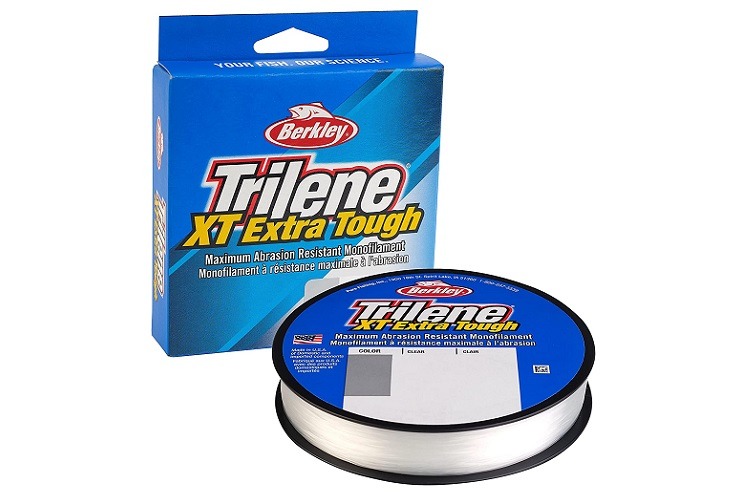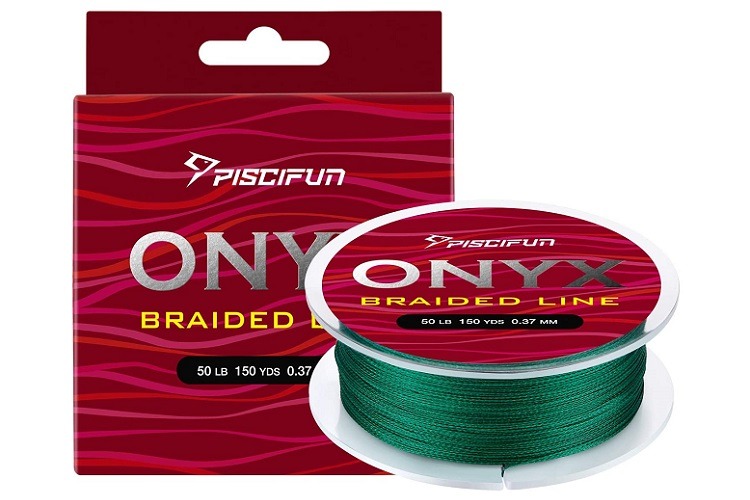The best fishing line for trout combines several features, including low visibility, great castability, incredible strength, and high sensitivity.
We’ll not bore you with any lengthy discussions on the biology or background of the line-shy trout.
Chances are, you’re familiar with the species and its reputation for having keen eyesight.
Our focus here is to provide information that will help you decide the best line for trout fishing in your specific conditions.
This article presents five of the top-rated options from the main fishing line categories, including fluorocarbon, monofilament, and braided lines.
Of course, every experienced angler knows to go with fluorocarbon when targeting trout in clear water. So, why did we include mono and braids?
Simple!
Not everyone fishes in crystal-clear waters.
Regardless of whether you plan to catch trout in murky or clear water, the fishing lines on this list will work excellently for different fishing conditions.
Without further delay, here are the best lines for catching trout.
Best Fishing Line For Trout – Reviews & Buying Guide
Best Leader: Seaguar Blue Label Fluorocarbon Leader Material
Product Overview
When an all-around leader material matters most to you, consider Seaguar’s Blue Label Fluorocarbon.
Like any good-quality fluoro, trout will have a tough time detecting this line in the water.
It features Seaguar’s proprietary double-structure fluorocarbon (DSF) technology, giving it super strength.
If you are in the market for the best leader material, this would be it. Buying this line is money well invested!
Featured Spec
- Material: Polyvinylidene Fluoride
- Length: 25 Yards
- Line Weight: 8 lbs
Pros
- Better knot strength than other brands
- Ideal for freshwater and saltwater leader application
- Virtually invisible underwater
- Resistant to extreme weather conditions
- Very strong leader material
Cons
- Small roll and not enough length
Product Review
This 100% fluorocarbon leader material comes with everything that a high-quality line for trout fishing should have.
Blue Label is arguably one of the strongest fluoro leader materials on the market. That’s not too surprising though, considering it is a product of Seaguar, a leading name in the fishing tackle industry. Plus, it uses the brands’ exclusive double-structure technology.
Compared to similar pound-test fluoro lines, Blue Label uses a smaller pound test, thanks to its advanced strength.
What does this mean for you?
You have a leader material that offers a more effective presentation.
But there’s more to this leader material than sheer strength.
You don’t have to worry about the line getting weak from exposure to ultraviolet light, harsh chemicals, or even cold conditions. Seaguar designed it with the right properties to resist a variety of harsh environmental conditions.
In addition to being impervious to cold weather, the high-density leader material is non-absorbent. That means it has greater wet strength.
Combine this quality with its impressive abrasion resistance and impact strength, and you have an all-around leader material that you can count on every time.
Here’s one more reason to consider this line for trout fishing:
It offers 34% better knot strength than other similar options. In other words, the chances of the knots slipping when you fish are very slim, even when the line snags against an underwater structure.
Best Monofilament: Stren High Impact Monofilament Fishing Line
Product Overview
Line-punishing and hard-hitting game fish like trout will find their match in Stren’s High Impact Monofilament fishing line.
The line is remarkably strong and durable, a little wonder it is called High Impact.
Like most monofilaments, the price is affordable. Consider this option if you want the best trout fishing line for spinning reels.
Featured Spec
- Material: Stainless Steel
- Length: 1275 Yards
- Line Weight: 10 lbs
Pros
- Great choice for saltwater fishing
- Suitable for spinning, trolling, and casting reels
- Absorbs large amount of shock
- Inexpensive fishing line
- Great for fishing in low-light conditions
Cons
- Not very sensitive
- Tends to more memory
Product Review
If you’re like most inexperienced anglers, using a monofilament line for trout is simply unthinkable.
That’s quite understandable, considering the many drawbacks of the line.
But when you’re dealing with an outstanding shock-resistant mono line like the High Impact Monofilament line from Stren, catching trout is very possible.
Monofilaments are pretty easier to use for anglers of all experience levels. Plus, spinning reels are ideal for newcomers to the fishing world.
If the above describes you, and you want to increase your chances of catching trout, High Impact might be your best bet.
Stren designed the mono line to be the best trout fishing line for spinning reels. And that’s why it’s included in our top-five fishing lines for trout, particularly suitable for newbie anglers.
And just because it is great for spinning reels doesn’t make it any less suitable for casting and trolling or conventional reels. That means pro anglers will also find it quite practical for landing large trout in the right type of water.
While this option is great, it comes with a tradeoff.
It is not as sensitive as the other lines on this list. Thankfully, its low sensitivity is not noticeable enough to make a huge difference, especially for everyday fishing. And it is definitely not a deal-breaker for most anglers.
Best Braid: SpiderWire Stealth Braid Fishing Line
Product Overview
The SpiderWire Stealth Braid Fishing Line is a great pick for anglers looking for a braided line that helps them cast further.
The chances of spooking fish with this line are very slim. It performs well for fighting fish, so there’s no fear of line breakage with this option.
Unlike most other braids, this line is less likely to split hairs and dig into itself, as long as you don’t exert excessive stress on the retrieve.
It is highly affordable and will last for many fishing outings.
Featured Spec
- Material: Polyethylene
- Length: 125 Yards
- Line Weight: 6“ 15 lbs
Pros
- Excellent knot and breaking strength
- Great for casting further
- Handles well on spinning and baitcasting reels
- Ideal for saltwater applications
- Wide range of pound tests and colors to choose from
Cons
- Tends to knot up a bit more than other lines
- Not the best choice for extreme waves
Product Review
Catching trout requires stealth. That’s where this offering from SpiderWire shines. The brand’s Stealth Braid Fishing Line casts as quiet as a stalking cat!
Not even trout will get spooked by the line.
Why is the line so smooth and silent?
Stealth features a clever fluoropolymer coating. This makes the braid edges very smooth and silent during casts.
Designed from Dyneema polyethylene material, this line is remarkably strong and durable. Of course, it is also abrasion-resistant.
Even when you have plenty of line yards out, Stealth remains rigid and very sensitive.
One other thing we like with this braided line is the colors. Although the product under review is moss green, SpiderWire offers the braided line in a wide selection of colors. That means you can easily find something that will match any water and weather conditions. So it’s definitely one of the best fishing lines for trout.
Runner Up Monofilament: Berkley Trilene XT Monofilament Fishing Line
Product Overview
Most monofilament lines are very affordable, but the Berkley Trilene XT Monofilament Fishing Line comes with an even lower price tag. And it holds up more than many other more expensive lines.
This mono line has 50% greater wet strength and 20% greater knot strength.
While it doesn’t cost much, it does put up an excellent performance and is a lot more flexible than most other monofilament lines.
Featured Spec
- Material: Nylon
- Length: 300“ 3000 Yards
- Line Weight: 10 lbs
Pros
- Inexpensive fishing line
- Excellent for fishing in heavy cover
- Superior fighting strength
- Handles well for casting, flipping, or pitching
- Withstands rough and sharp objects
Cons
- Tends to tangle easily after a while
- Has lots of memory
Product Review
Looking for an inexpensive fishing line for trout? Go with the Trilene XT Monofilament Fishing Line.
Yes, it is very affordable, but it is far from being cheap.
Berkley made sure to design this mono line with all the features expected in a high-quality fishing line.
This can easily become your favorite line for nearly all your fishing trips. It works great whether you’re casting, pitching, or flipping. It comes off quite smoothly from both spinning and casting reels.
You can expect a good fight with even the most stubborn trout and other big game species. It can take a ton of punishment from razor-sharp teeth, underwater objects, and structures, as well as sharp-edged stones.
Even after many fishing sessions, you’ll hardly notice any significant wear in the line. Plus, tying a knot is a lot easier with this mono line. You are less likely to retie the line excessively.
Trilene XT checks a lot of boxes for many anglers of all experience levels. But it does have a few drawbacks.
Like other monofilament lines (even high-end or expensive ones), it has memory. Also, it might start to tangle rather frequently after a number of fishing outings. Thankfully, Berkley designed the line to untangle a lot easier than many other similar lines.
Overall, you’ve got an inexpensive yet high-performing fishing line for trout with this offering from Berkeley.
Runner Up Braid: Piscifun Onyx Braided Fishing Line
Product Overview
Here’s another highly affordable braided line that’s excellent for catching trout. The Onyx Braided Fishing Line by Piscifun should be on your radar if you want an extra-smooth yet strong braided line.
The braided line comes in two different tensile strengths. Four high-strength strands for the 6“ 50-pound test and eight powerful strands for the 65“ 150-pound test braid.
This makes it easy to knot the line compared to other braids. Plus, it offers better casting.
Featured Spec
- Material: Polyethylene
- Length: 150“ 547 Yards
- Line Weight: 6“ 150 lbs
Pros
- Consistent roundness
- Very affordable
- Excellent sensitivity
- Color does not fade easily
- Strong and durable
Cons
- Not very flexible
Product Review
Our last entry is from Piscifun, one of the leading brands in the fishing tackle industry. And just because it is the last fishing line on this list doesn’t make it any less effective. In fact, there’s a lot to love about this braided fishing line and that’s why we have included it in our best fishing line for trout review.
Expect a high-performing fishing line for trout with the Onyx Braided Line.
Why is that?
The manufacturer stepped out of the traditional way of doing things when it designed this braided line with its new and advanced epoxy coating technology.
What this means is that you have a stronger and extremely durable braided line that won’t break or damage easily even after many fishing outings. Its abrasion resistance is simply topnotch!
It comes in 4-strands and 8-strands fiber braiding designs. Regardless of which option you choose (6“ 50-pound test or 65“ 150-pound test), you can be sure that the line will hold up nicely.
The line is extra smooth, meaning it is very easy to tie a knot. However, the knots are very solid so fish won’t slip off easily.
Here’s another good thing about the line’s smoothness:
It significantly minimizes backlash! So you don’t have to worry about spending lots of time untangling a bird’s nest. Instead, you’ll focus more on your technique for catching trout.
Like other high-quality braids, Onyx has almost no stretch. This gives it high sensitivity so you can feel what’s happening with your line under the water. You’ll be able to sense even the slightest bikes and nibbles on your hook and lure. This is why we rate it as one of the best fishing lines for trout.
Even when you have used this line for a long time, it is not likely to have significant memory, thanks to its small diameter to pound test ratio.
Fishing Line For Trout FAQ
What kind of line is best for trout?
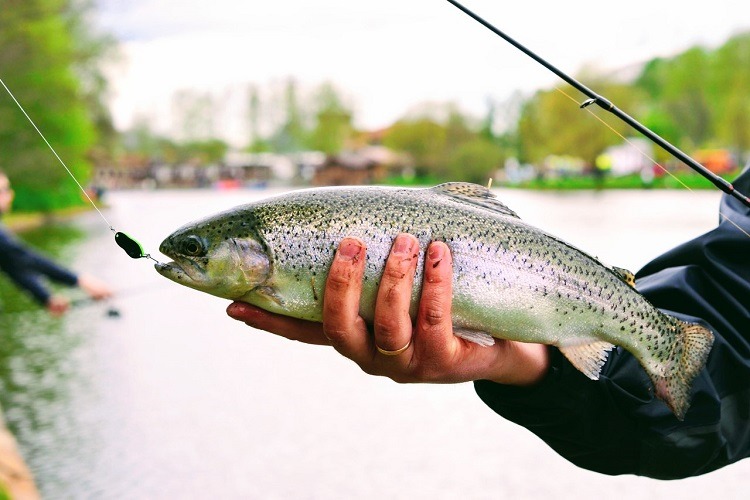
The best line for trout fishing is fluorocarbon.
Of course, it has its drawbacks but when it comes to targeting finicky trout as well as other line shy species, fluorocarbon fishing lines are better than mono and braid lines.
Trout is known for its keen eyesight but the fish will have a hard time seeing fluoro line under the water. Fluorocarbon has the lowest visibility of all fishing lines, and that’s its major advantage, especially when targeting trout in heavily fished waters.
But there’s more.
Although the quality of being inconspicuous under the water is great, it is not enough to land trout, at least, not when you are targeting trophy size trout.
In addition to having good casting properties, the best line for trout fishing also needs to be sensitive enough to pick out subtle bites.
Plus, when the fish strikes, the line should be strong and effective enough to set the hook without issues and to fight big trout.
Compared to mono and braid, fluoro fits the bill nicely.
What’s more, fluorocarbon lines have high resistance to UV light. Plus, they have low memory compared to monofilament lines.
But there’s a catch.
You’ll have to factor in the specific fishing application when choosing a fluorocarbon line for trout fishing.
Besides being highly intelligent, trout is a predator fish, so it has plenty of strong and needle-like teeth that can easily cut fishing lines. And if you’re going after large trout, you’re in for a tough fight since the species has incredibly strong jaws.
Thankfully, you may not have to worry too much about the teeth if you are targeting smaller trout.
Here’s what all that means.
A fluorocarbon line size between 8 and 10-pound test should be on your radar if you are targeting trophy size trout. Although it is not completely impossible, a smaller line diameter is usually a poor choice for landing large trout.
For finesse application, you’ll want to choose a fluorocarbon line of between 4 and 6-pound test.
Here’s why.
In addition to being almost invisible in the water, it is light enough to cast ultra-light lures. If fishing in clear water conditions is what you want to do, this is the line to go for.
And that’s not all.
A 4 to 6-pound test fluorocarbon fishing line is strong enough for trolling. In a nutshell, the line can easily pass as the best all-around fishing line set up for trout.
However, fluoro tends to sink faster, making it a poor choice for topwater presentations.
Some monofilament and braid lines are equally suitable for catching trout in certain conditions. Mono lines are easier to use, making them great for beginners.
Keep in mind that monofilaments are more visible in the water. So, consider using a 2 to 4-pound test mono as a leader for casting lures and bobber fishing when targeting trout.
The odds might be stacked against you if you plan to use a braided fishing line for trout in clear water conditions. Braids are even more visible underwater than mono lines.
However, braids are incredibly sensitive because they have no stretch. And that’s very beneficial for feeling what’s happening with your hook or lure in the water.
So, using a braided fishing line for trout is a great choice if deep water fishing is on the agenda.
Does line color matter for trout?
Yes, line color matters when fishing for trout or any other line shy species.
Keep in mind that the way a color looks on the ground is different from how it appears underwater at different levels. You are looking for a line color that trout can’t easily detect, not one that you the angler can see.
Of course, you naturally want to spot your line underwater, but if you can see the line when submerged inside the water, you can be sure that finicky trout will see it too and avoid it!
Matching your line color to your lure color might is also something you don’t want to do. You want fish to go after your lure and not to swim in the opposite direction!
For this reason, it makes sense to choose a line color that blends easily with the water environment (clear, murky, or stained) while allowing trout to notice your lure and take a bite.
Okay, what color of fishing line should you use for trout? And in what type of fishing conditions should you use these line colors?
Here are some general suggestions, regardless of whether you go with fluoro, mono, or braid lines:
- Blue fishing lines:
- Red and pink fishing lines: Going after trout in deep waters will yield better results with pink or red fishing lines. Usually, some wavelengths of the sun hardly reach very deep, so pink and red are among the first colors to fizzle out at great depths.
- Clear or transparent fishing lines: This is the best color for trout fishing, particularly in crystal clear waters. Colorless lines will blend seamlessly with the water and make it difficult for trout to see.
- Yellow fishing lines: Choose a yellow fishing line if catching fish in murky waters is what you plan to do. The line color is great for beginner anglers who may not have sufficient experience with how a line feels and rely more on sight. You can see yellow better when fishing in dark or low-light conditions. However, trout is a highly suspicious fish and may quickly detect a yellow line, even in murky waters.
- Green fishing lines: Green is a great choice for fishing in various conditions. It blends nicely with its surrounding, especially for freshwater fishing in nature. However, it is a poor color choice for fishing in gin-clear water since it will be visible in such conditions.
Can trout see fishing line?
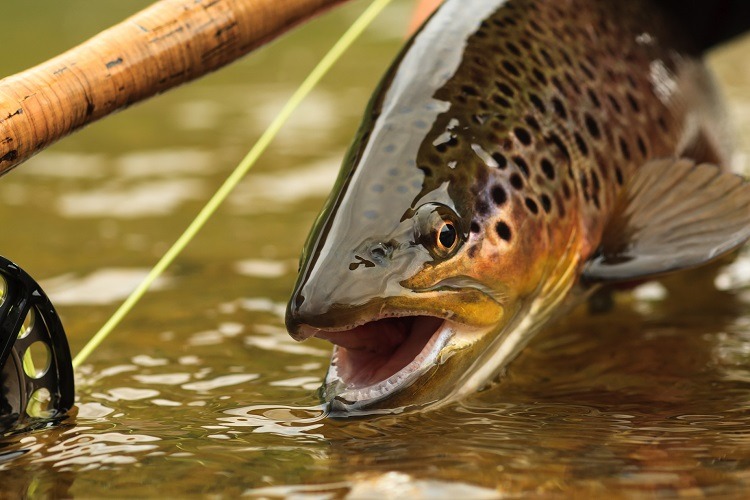
In one word, yes!
Trout can see your fishing line rather very easily. The species is known to have exceptional vision, somewhat similar to that of humans.
But it gets even better.
Trout can detect UV light far beyond what human eyes can see. Thanks to their ability to move each eye independently, their field of view is greater.
And even beyond seeing fishing lines, trout can actually distinguish between the various line colors at different water levels.
Knowing what lines to use for trout can be the difference between going home frustrated without a single catch and landing a handful of trophy fish.
There’s a reason most experienced anglers target trout with fluorocarbon lines. These are nearly invisible once submerged in water.
If it’s your first time considering a fluoro line, here’s a test you might want to do.
Put a fluorocarbon line into a transparent bowl, a clear fish tank, or a glass of water. It will become easy to understand why the line is your best bet for catching line shy species like trout.
The line will become almost invisible underwater!
That’s because fluorocarbon lines have similar light refraction properties as water. So, they can easily blend with colorless water, making a great pick for fishing in clear water.
How do you rig a trout line?
There are a few different ways to rig a trout line.
The basic rig setups include:
- Rigs that use weight to present bait close to the bottom of the water
- Rigs that let your bait float or suspend it under a bobber
- Rigs that lets you effectively cast and retrieve artificial lures
The exact fishing line setup for trout will depend on where you plan to fish, stream, lake, or pond.
You also want to factor in your fishing technique when trying to rig for trout. Here’s a quick rundown of a few common options:
- Lure rigs (bobber and jig, spinner, and ned)
- Bobber rigs (slip bobber and fixed bobber)
- Bottom fishing rigs (Carolina, split shot, drop shot, and slip sinker)
In any case, the basic setups can be used in nearly all trout fishing applications. Plus, you can tweak them to include more specialized rigs once you get a handle on which option works best for your particular situation.
Conclusion
What’s the best fishing line for trout? After reading this review, we are sure you now know that there’s no such thing as a one-size-fits-all line for catching trout.
The best line for trout fishing will depend on a few different factors, which this guide already covers in great detail.
Take those factors into consideration when making your buying decisions. They’ll help you avoid throwing away your money on a good-quality but poorly-matched fishing line for your purpose.

